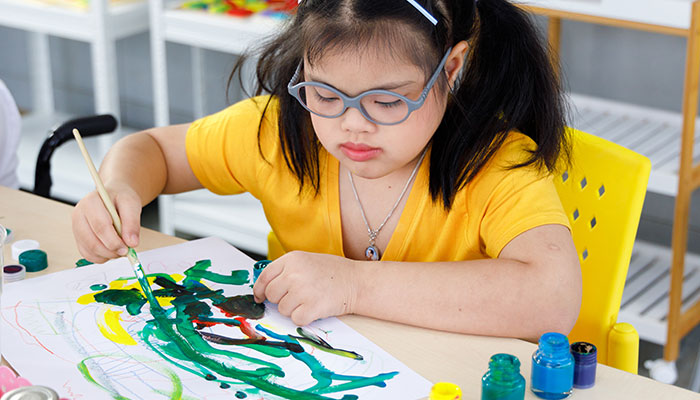While we believe that the books and resources recommended may be of value to you, keep in mind that these are suggestions only and you must do your own due diligence to determine whether the materials are appropriate and suitable for your use. PNC has no sponsorship or endorsement agreement with the authors or publishers of the materials listed.
ELEMENT OF ART
Colorful Still Life

Children will explore colors and create art from still life.

Lesson Objective
Children will explore and interpret colors in artwork and will create their own colorful still life artwork.
Art
What You'll Need
- Image from the Barnes Foundation: Download Blue Still Life by Henri Matisse
- Fruit (real or imitation)
- Crayons
- Markers
- Vase with flowers (real or imitation)
- White paper – 1 sheet per child
What To Do
Note: This lesson is best taught after the lesson, Exploring Color, found on this website.
- Explain that we will be exploring colors in a work of art and using color to make our own artwork.
- Display the artwork, and have the children “observe” (look closely) at the painting.
- Ask them to describe what they see and to name the colors (see Guiding Student Inquiry).
- Refer back to the artwork, and ask why they think artists sometimes paint with brilliant colors and sometimes with neutral colors (see Did You Know?).
- Explain that this type of painting is called a still life, and it is set up by the artist using everyday items that don’t change or move, so he or she can paint them.
- Have the children help to arrange the vase with flowers and fruit in a central location so that all children can see the objects.
- Have the children look closely at the still life that they helped create, carefully “observing” colors, shapes, and lines.
- Distribute paper, crayons, and markers, and have them re-create the still life on their paper.
- Display the children’s artwork, and help them to talk about the colors, shapes, and lines in their artwork.
Resources
Home School Resources
Home educators: use these printable lesson PDFs to teach this lesson to your home schoolers. They're available in English and Spanish.
Content Provided By
Common Core State Standards Initiative – These lessons are aligned with the Common Core State Standards ("CCSS"). The CCSS provide a consistent, clear understanding of the concepts and skills children are expected to learn and guide teachers to provide their students with opportunities to gain these important skills and foundational knowledge [1]. Visit the CCSS
- There are currently no Common Core Standards for pre-k, but these lessons are aligned as closely as possible to capture the requirements and meet the goals of Common Core Standards. However, these lessons were neither reviewed or approved by the National Governors Association Center for Best Practices or the Council of Chief State School Officers, which together are the owners and developers of the Common Core State Standards.
"PNC Grow Up Great" is a registered mark of The PNC Financial Services Group, Inc
Read a summary of privacy rights for California residents which outlines the types of information we collect, and how and why we use that information.


